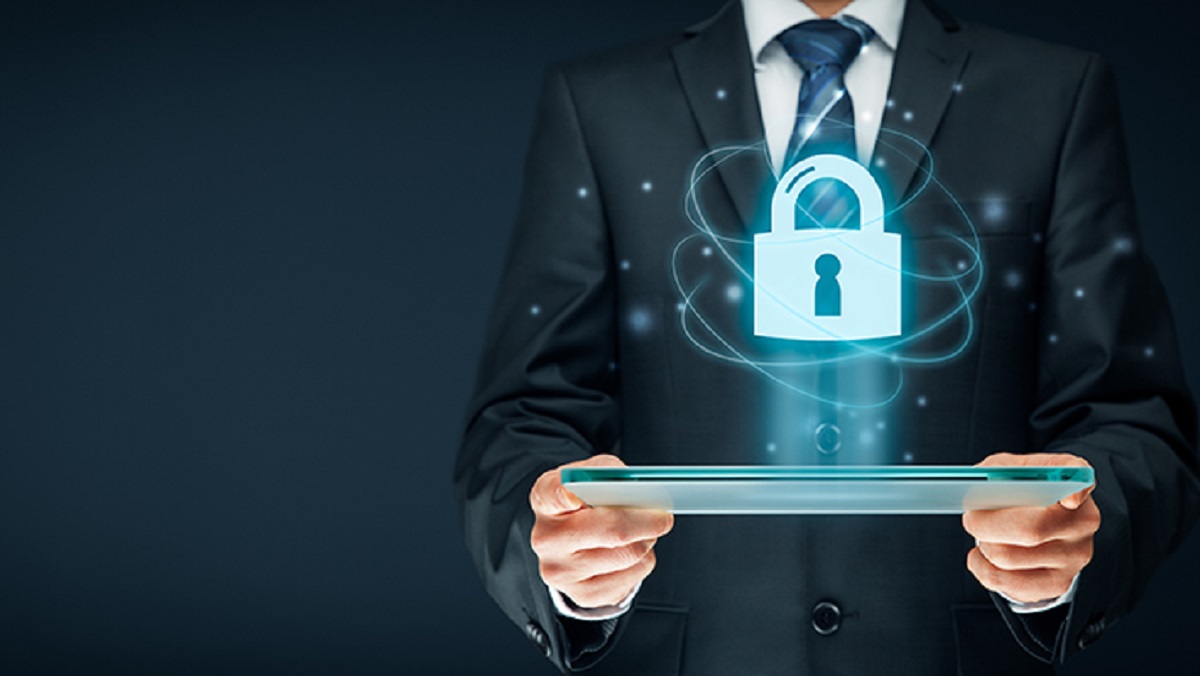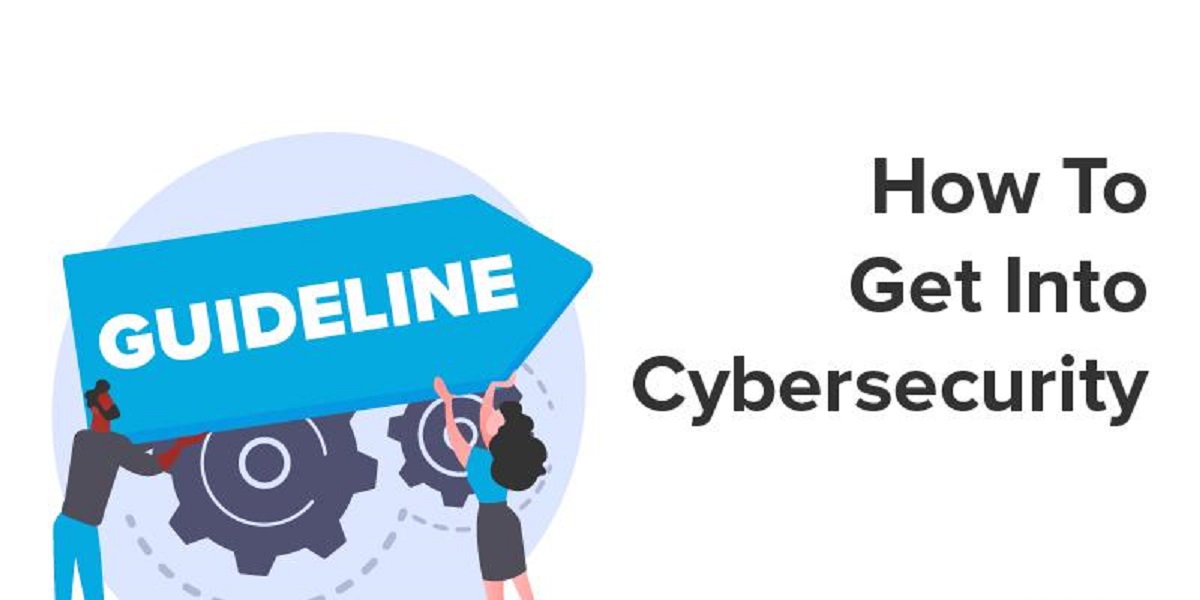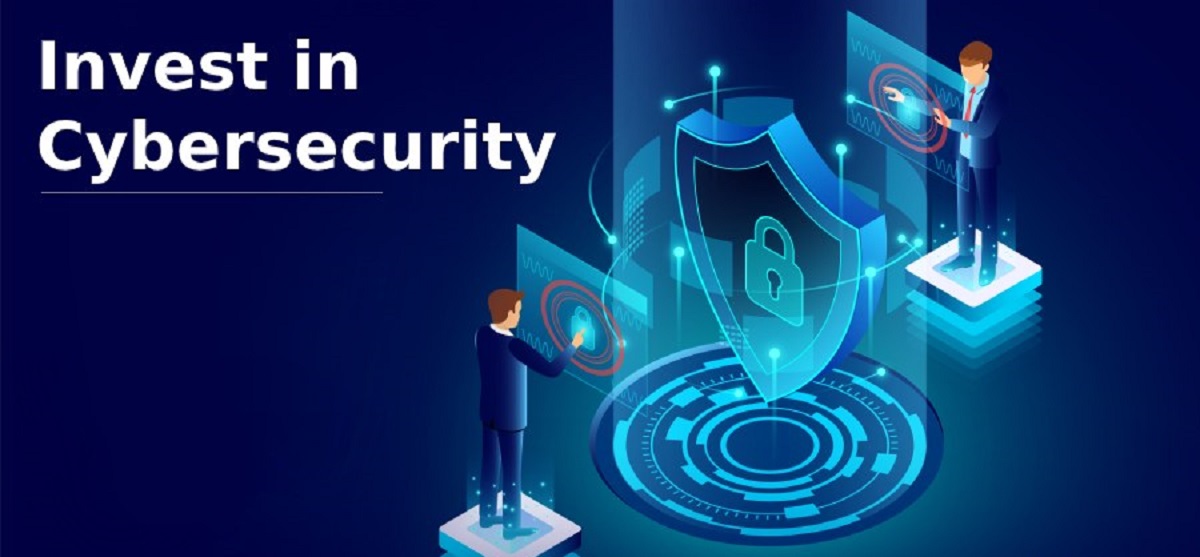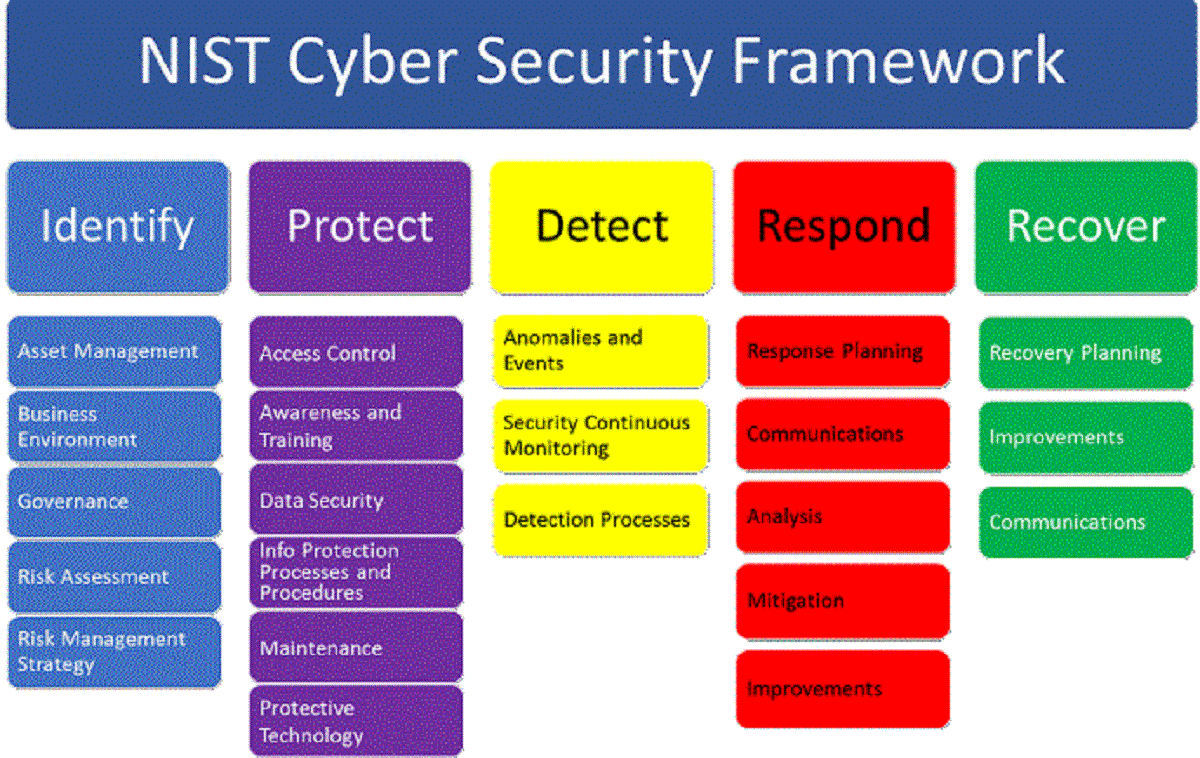Introduction
Cybersecurity has become an increasingly important topic in today’s digital age. With the proliferation of technology and the internet, individuals and organizations are more connected than ever before. However, this connectivity also brings with it significant risks and threats to our personal and professional data.
Cybersecurity is the practice of protecting electronic systems, networks, and sensitive information from unauthorized access, breaches, and attacks. It encompasses a wide range of measures including implementing robust security protocols, encryption, firewalls, and regular vulnerability assessments. The goal is to ensure the confidentiality, integrity, and availability of data in the face of ever-evolving threats.
Ensuring robust cybersecurity is of paramount importance in our modern world. Organizations face potential financial losses, damage to reputation, and legal issues if they do not adequately protect their data. Individuals risk identity theft, financial fraud, and privacy breaches if they do not have proper security measures in place.
There are various common cybersecurity threats that individuals and organizations need to be aware of. These include malware, phishing attacks, ransomware, social engineering, and data breaches. Cybercriminals are continually evolving and developing new ways to exploit vulnerabilities, making it essential for individuals and organizations to stay informed and proactive in their security measures.
Implementing effective cybersecurity measures involves a combination of technological solutions, best practices, and user awareness. Organizations need to implement robust security systems, regularly update software, and train employees on safe online practices. Individuals, on the other hand, need to follow best practices such as using strong and unique passwords, being cautious of suspicious emails or links, and keeping software and devices up to date.
Both individuals and organizations have a role to play in the overall cybersecurity landscape. Individuals need to be vigilant and proactive in protecting their own data, while organizations must invest in adequate security measures to safeguard their systems and customer information.
This article will delve into the world of cybersecurity, exploring common threats, how cybersecurity works, best practices, and the role of individuals and organizations. It will also touch on emerging trends in the field and highlight the importance of staying informed and proactive in the ever-changing digital landscape.
What is Cybersecurity?
Cybersecurity refers to the practice of protecting electronic systems, networks, and data from unauthorized access, theft, damage, or any other form of malicious activity. It encompasses a wide range of measures, including technical, procedural, and physical controls, designed to ensure the confidentiality, integrity, and availability of information.
Cybersecurity is essential in today’s interconnected world, where organizations and individuals rely heavily on technology and the internet to store, transmit, and process sensitive data. From personal information like social security numbers and financial details to critical infrastructure systems like power grids and healthcare records, all are vulnerable to cyber threats.
The scope of cybersecurity covers a broad range of areas, including network security, information security, application security, cloud security, and more. It involves implementing various security measures such as firewalls, antivirus software, intrusion detection systems, encryption, and authentication mechanisms to prevent unauthorized access and protect against cyber attacks.
Cybersecurity is not a one-time process but rather an ongoing effort. It requires organizations to constantly monitor their systems for potential vulnerabilities and stay updated with the latest security patches and protocols. Additionally, it involves educating employees and users about safe online practices to minimize the risk of falling victim to social engineering attacks or other forms of cybercrime.
As technology evolves, so do the threats and challenges in the cybersecurity landscape. Cybercriminals are becoming increasingly sophisticated in their tactics, exploiting zero-day vulnerabilities, launching targeted attacks, and using advanced malware to gain unauthorized access to systems and steal sensitive data.
Furthermore, with the rise of interconnected devices and the Internet of Things (IoT), the attack surface has expanded, leading to new vulnerabilities and potential entry points for cyber attacks. Securing these devices and ensuring their integration within secure networks is a critical aspect of cybersecurity.
Overall, cybersecurity is an ever-evolving field that requires constant vigilance and adaptation to stay ahead of emerging threats. It involves a combination of technical solutions, best practices, and user awareness to mitigate the risks associated with unauthorized access, data breaches, and other cyber attacks.
Why is Cybersecurity Important?
Cybersecurity plays a crucial role in our digital landscape, and its importance cannot be overstated. Here are some key reasons why cybersecurity is so important:
- Protection of Sensitive Data: In our digital age, organizations and individuals store and transmit vast amounts of sensitive data. This data includes personal information, financial records, intellectual property, and confidential business data. Cybersecurity measures are necessary to protect this data from unauthorized access, theft, or misuse.
- Prevention of Financial Loss: Cyber attacks can have severe financial consequences. Organizations face the risk of financial losses due to data breaches, theft of intellectual property, or disruption of operations. Cybersecurity measures help minimize these risks and safeguard financial stability.
- Maintenance of Business Reputation: A data breach or cyber attack can have a devastating impact on an organization’s reputation. Customers lose trust in companies that fail to protect their data, leading to loss of business and damage to brand image. Implementing robust cybersecurity measures demonstrates a commitment to data protection and can help maintain a positive reputation.
- Prevention of Identity Theft: Personal information is valuable to cybercriminals who seek to engage in identity theft or financial fraud. Implementing strong cybersecurity measures helps protect individuals from becoming victims of these crimes.
- Preservation of National Security: Cyber attacks can pose significant threats to national security. Governments and critical infrastructure systems are potential targets for cyber warfare or state-sponsored attacks. Robust cybersecurity measures are essential to safeguard national security interests and protect against threats to public safety.
- Compliance with Legal and Regulatory Requirements: Many industries are subject to strict legal and regulatory requirements regarding data protection. Failure to implement adequate cybersecurity measures can result in legal consequences, fines, and other penalties. Compliance with these requirements is crucial for both organizational and individual data privacy.
As technology advances and cyber threats become more sophisticated, cybersecurity must keep pace with these challenges. It is crucial for organizations and individuals to prioritize cybersecurity as a fundamental aspect of their operations. By implementing comprehensive security measures, staying informed about emerging threats, and fostering a culture of cyber awareness, we can protect sensitive data, mitigate risks, and ensure a safer digital environment for everyone.
Common Cybersecurity Threats
In today’s interconnected world, there are various cybersecurity threats that individuals and organizations need to be aware of. Understanding these threats is crucial in order to implement effective cybersecurity measures. Here are some common cybersecurity threats:
- Malware: Malware, short for malicious software, refers to any software designed to infiltrate or damage computer systems. This includes viruses, worms, Trojans, ransomware, and spyware. Malware can be spread through malicious email attachments, unsafe downloads, or infected websites. Once installed on a system, malware can steal sensitive data, disrupt operations, or even take control of the entire system.
- Phishing Attacks: Phishing attacks involve cybercriminals attempting to deceive individuals into revealing personal information such as passwords, credit card numbers, or social security numbers. These attacks usually come in the form of fraudulent emails, text messages, or websites that mimic legitimate entities. Phishing attacks can result in identity theft, financial loss, or unauthorized access to sensitive accounts.
- Ransomware: Ransomware is a type of malware that encrypts files on a victim’s computer or network, rendering them inaccessible until a ransom is paid. Victims are often coerced into paying the ransom in order to regain access to their valuable data. Ransomware attacks can be devastating for individuals and organizations, causing financial loss, data breaches, and reputational damage.
- Social Engineering: Social engineering involves manipulating individuals into divulging sensitive information or performing actions that they would not typically do. This can include tactics such as impersonating someone in a position of authority, tricking individuals into disclosing passwords, or convincing them to transfer money to fraudulent accounts. Social engineering attacks exploit human vulnerabilities rather than technical weaknesses.
- Data Breaches: A data breach occurs when unauthorized individuals gain access to confidential data. This can happen due to hacking, insider threats, or unintended exposure of sensitive information. Data breaches can result in financial loss, legal consequences, damage to reputation, and compromised personal information of individuals.
It is important to note that cyber threats are constantly evolving, with cybercriminals devising new and sophisticated methods to exploit vulnerabilities. Staying informed about emerging threats and keeping security measures up to date is crucial in mitigating these risks.
By understanding common cybersecurity threats, individuals and organizations can take proactive steps to protect their systems and data. Implementing robust security measures, staying vigilant against suspicious emails or websites, and regularly updating software are all essential in safeguarding against these threats. Additionally, educating employees and users about best practices in cybersecurity can significantly reduce the risk of falling victim to cyber attacks.
How Cybersecurity Works
Cybersecurity involves a combination of technical measures, best practices, and user awareness to protect electronic systems and data from unauthorized access and malicious activities. Here’s an overview of how cybersecurity works:
1. Risk Assessment: The first step in cybersecurity is to conduct a thorough risk assessment. This involves identifying potential vulnerabilities and threats, evaluating their potential impact, and determining the likelihood of these risks occurring. By understanding the specific risks faced by an organization or individual, appropriate security measures can be implemented.
2. Security Measures: Cybersecurity employs various security measures to protect electronic systems and data. These measures include:
- Firewalls: Firewalls act as a barrier between internal networks and external sources, monitoring and controlling incoming and outgoing network traffic based on predefined security rules.
- Encryption: Encryption transforms data into unreadable form, only accessible through decryption using a specific key. This ensures that even if the data is intercepted, it remains unreadable.
- Authentication: Authentication mechanisms, such as passwords, biometrics, or two-factor authentication, verify the identity of users or devices before granting access to systems or data.
- Intrusion Detection Systems (IDS) and Intrusion Prevention Systems (IPS): IDS and IPS monitor network traffic, detecting and preventing potential unauthorized access or attacks in real-time.
- Regular Updates and Patches: Keeping software, operating systems, and security tools up to date with the latest patches and updates is essential to address known vulnerabilities and mitigate risks.
- Vulnerability Assessments: Regular vulnerability assessments and penetration testing help identify weaknesses in networks or systems, allowing for timely remediation and strengthening of security defenses.
3. User Education and Awareness: User education and awareness play a critical role in cybersecurity. Individuals need to be trained on best practices, such as avoiding suspicious emails or links, using strong and unique passwords, and reporting any security incidents promptly. By promoting a proactive cybersecurity culture, organizations and individuals can reduce the risk of falling victim to cyber attacks.
4. Incident Response: Despite implementing preventive measures, cyber incidents can still occur. Having an incident response plan in place is crucial to quickly and effectively address security incidents. This includes steps such as isolating affected systems, investigating the incident, and taking appropriate actions to mitigate the impact and prevent future incidents.
5. Ongoing Monitoring and Adaptation: Cybersecurity is not a one-time effort but requires continuous monitoring and adaptation. Monitoring network traffic, system logs, and security alerts can help detect potential threats and vulnerabilities. By staying informed about emerging threats and adopting new security technologies, individuals and organizations can stay one step ahead of cybercriminals.
Cybersecurity is a dynamic and evolving field, requiring a multi-layered approach to protect systems and data from an increasingly sophisticated threat landscape. By implementing robust security measures, promoting user awareness, and staying proactive in detecting and responding to incidents, individuals and organizations can significantly reduce the risks posed by cyber threats.
Cybersecurity Best Practices
Implementing cybersecurity best practices is essential to protect electronic systems, data, and personal information from cyber threats. By following these practices, individuals and organizations can enhance their overall security posture. Here are some key cybersecurity best practices:
- Use Strong and Unique Passwords: Choose complex passwords that include a combination of uppercase and lowercase letters, numbers, and special characters. Avoid reusing passwords across multiple accounts to minimize the risk of unauthorized access.
- Enable Two-Factor Authentication: Two-factor authentication adds an extra layer of security by requiring users to provide additional verification, such as a unique code or fingerprint, in addition to their password.
- Keep Software and Systems Updated: Regularly update software, operating systems, and security tools with the latest patches and updates. Software updates often include security fixes that address known vulnerabilities.
- Be Cautious of Suspicious Emails or Links: Phishing attacks often start with a deceptive email or message containing malicious links or attachments. Be vigilant and avoid clicking on suspicious links or downloading files from unknown sources.
- Regularly Back Up Data: Back up important data regularly and store backups in separate locations. In case of a ransomware attack or data loss, having backups ensures that data can be restored without paying a ransom or suffering irreversible damage.
- Use Firewall and Antivirus Software: Install and regularly update firewall and antivirus software to protect against malware, viruses, and other malicious activities. These security tools help detect and prevent unauthorized access and harmful software.
- Secure Wi-Fi Networks: Secure your wireless networks with strong passwords and encryption protocols. Avoid using public Wi-Fi networks for sensitive activities as they may be insecure and prone to eavesdropping.
- Implement Least Privilege Access: Follow the principle of least privilege, granting users the minimum level of access necessary to perform their tasks. This reduces the risk of unauthorized access and limits the potential damage caused by a compromised account.
- Employee Training and Awareness: Educate employees about cybersecurity best practices, such as identifying phishing attempts, password management, and safe browsing habits. Regular training sessions and awareness campaigns help create a security-conscious culture within the organization.
- Regularly Monitor and Audit Systems: Implement monitoring tools and practices to detect any suspicious activities or anomalies in the system. Regular security audits and vulnerability assessments help identify weaknesses and allow for timely remediation.
By adopting these cybersecurity best practices, individuals and organizations can strengthen their defenses against cyber threats. It is vital to stay informed about emerging threats and continually adapt security measures to protect against evolving attack vectors. Remember, cybersecurity is a collective effort, and everyone plays a role in maintaining a secure digital environment. By prioritizing cybersecurity best practices, we can better protect ourselves, our data, and the digital world we inhabit.
Role of Individuals in Cybersecurity
Individuals play a crucial role in maintaining a secure digital environment. While organizations implement cybersecurity measures, it is equally important for individuals to be proactive in protecting their personal information and devices. Here are some key aspects of the role individuals play in cybersecurity:
- Personal Security Awareness: Individuals need to be aware of common cybersecurity threats, such as phishing attacks, malware, and social engineering. By staying informed and educated about these threats, individuals can recognize and avoid potential risks.
- Practicing Good Password Hygiene: Individuals should create strong and unique passwords for their online accounts. It is advisable to use a combination of letters, numbers, and special characters and avoid using easily guessable information.
- Implementing Two-Factor Authentication: Enabling two-factor authentication adds an extra layer of security to online accounts by requiring an additional verification step, such as a unique code sent to a mobile device, along with a password.
- Being Cautious of Suspicious Emails and Links: Individuals should exercise caution when opening emails or clicking on links from unknown sources. Phishing attacks often use deceptive emails or websites to trick individuals into revealing sensitive information or downloading malicious software.
- Updating Software and Devices: Regularly updating software applications, operating systems, and devices helps ensure that security patches and fixes are in place to address known vulnerabilities. Outdated software can be an easy target for cybercriminals.
- Backing Up Data: It is important for individuals to regularly back up their data to avoid the risk of data loss due to ransomware attacks, hardware failures, or other unexpected incidents. Backing up data to external storage devices or cloud services provides an extra layer of protection.
- Protecting Personal Devices: Individuals should secure their personal devices, including smartphones, laptops, and tablets, with strong passwords, biometric authentication, or PINs. Locking devices when not in use helps prevent unauthorized access in case of loss or theft.
- Secure Use of Wi-Fi Networks: When using public Wi-Fi networks, individuals should be cautious and avoid transmitting sensitive information, such as passwords or financial data. Connecting to secure networks or using a virtual private network (VPN) adds an extra layer of protection.
- Reporting Security Incidents: Individuals should promptly report any suspicious activities, security incidents, or potential data breaches to the appropriate authorities or IT department. This helps in containing and mitigating the impact of a potential cyber attack.
- Continual Learning and Adaptation: Individuals should stay informed about emerging cybersecurity threats, trends, and best practices. Being proactive in learning and adapting to changing security risks helps individuals stay one step ahead of cybercriminals.
By understanding the importance of personal cybersecurity and taking proactive measures, individuals can contribute to a more secure digital environment. While organizations and governments have a responsibility to protect systems and data, individual awareness and vigilant practices are essential for combating cyber threats and ensuring a safer online experience for everyone.
Role of Organizations in Cybersecurity
Organizations have a critical responsibility in ensuring strong cybersecurity practices to protect their systems, sensitive data, and the interests of their stakeholders. Here are some key aspects of the role organizations play in cybersecurity:
- Implementing Robust Cybersecurity Measures: Organizations should establish and maintain robust cybersecurity measures to protect their systems and data from unauthorized access, breaches, and attacks. This includes implementing firewalls, encryption, intrusion detection systems, and regular vulnerability assessments.
- Developing a Cybersecurity Strategy: Organizations need to develop a comprehensive cybersecurity strategy that aligns with their business goals and objectives. This strategy should define the organization’s security objectives, outline governance structures, and provide a roadmap for implementing and maintaining security measures.
- Employee Education and Training: Organizations should invest in educating and training their employees on cybersecurity best practices. This includes teaching employees how to identify and respond to phishing attempts, the importance of strong passwords, safe browsing habits, and the potential risks associated with social engineering attacks.
- Monitoring and Responding to Security Incidents: Organizations should have robust incident response plans in place to effectively handle security incidents. This includes monitoring networks and systems for potential breaches, promptly responding to incidents, and implementing measures to mitigate the impact and prevent further breaches.
- Regular Security Audits and Vulnerability Assessments: Organizations should conduct regular security audits and vulnerability assessments to identify and address potential weaknesses in their systems and networks. This helps in preventing security breaches and staying up to date with evolving threats.
- Ensuring Compliance with Regulations: Organizations should comply with industry-specific regulations and data protection laws. This includes ensuring the proper handling and protection of customer data, implementing appropriate security controls, and reporting data breaches as required.
- Implementing Access Controls: Organizations should implement access controls to ensure that only authorized personnel have access to sensitive information. This involves using role-based access controls, strong authentication mechanisms, and regularly reviewing user privileges.
- Partnering with Security Experts: Organizations can benefit from partnering with external cybersecurity experts or firms to enhance their security posture. These experts can provide specialized knowledge, conduct security audits, and recommend best practices for mitigating risks.
- Creating a Cybersecurity Culture: Organizations should foster a culture of cybersecurity awareness among their employees and stakeholders. This includes promoting a proactive approach to security, emphasizing the importance of individual responsibilities, and encouraging reporting of potential security incidents.
- Staying Informed about Emerging Threats: Organizations must stay informed about the latest cybersecurity threats, emerging trends, and vulnerabilities. This ensures that appropriate security measures are in place to address new challenges and protect against evolving threats.
By fulfilling their role in cybersecurity, organizations can protect their reputation, safeguard sensitive data, and maintain the trust of their stakeholders. Moreover, organizations play a collective responsibility in enhancing the overall cybersecurity landscape, contributing to a safer digital environment for all.
Emerging Trends in Cybersecurity
As technology advances, new cybersecurity challenges and threats continue to emerge. Staying ahead of these trends is crucial to protect digital systems and data effectively. Here are some emerging trends in cybersecurity:
- Artificial Intelligence (AI) and Machine Learning: AI and machine learning technologies are being leveraged to enhance cybersecurity defenses. These technologies can detect patterns, anomalies, and potential threats in real-time, enabling faster and more accurate response to cyber attacks.
- Internet of Things (IoT) Security: The increasing adoption of connected devices in homes, industries, and critical infrastructure brings new security challenges. Securing IoT devices and networks is crucial to prevent unauthorized access and protect against potential risks to privacy and safety.
- Cloud Security: With the widespread adoption of cloud computing, ensuring the security of data stored and processed in the cloud is a significant concern. Cloud security measures, such as data encryption, access controls, and regular audits, are essential to protect sensitive information.
- Mobile Device Security: Mobile devices, including smartphones and tablets, are increasingly targeted by cybercriminals. Mobile security measures, such as secure app development, strong passwords or biometric authentication, and remote wiping capabilities, are essential to protect personal and organizational data.
- Big Data Security: The collection and analysis of massive amounts of data pose security challenges. Protecting big data repositories from unauthorized access, ensuring data privacy, and implementing secure data analytics practices are vital for maintaining data integrity and trust.
- Blockchain Technology: Blockchain technology offers enhanced security and transparency by providing decentralized and tamper-resistant record-keeping. Its applications in securing digital transactions, maintaining identity trust, and ensuring data integrity are gaining attention in the cybersecurity field.
- Cybersecurity Automation: Automation tools and technologies are becoming increasingly important in cybersecurity operations. Automated threat detection, incident response, and security orchestration help organizations respond faster and more effectively to emerging cyber threats.
- Biometric Authentication: Biometric authentication, such as fingerprint or facial recognition, is gaining popularity as a more secure method of identity verification. Biometrics add an extra layer of security to passwords and can help prevent unauthorized access to systems or data.
- Quantum Computing Threats: While still in its infancy, the development of quantum computing presents both opportunities and challenges for cybersecurity. Quantum computing has the potential to break current encryption algorithms, leading to the need for new encryption methods and stronger security measures.
- Advanced Persistent Threats (APTs): APTs are sophisticated, long-term cyber attacks that target organizations and governments. These attacks involve persistent, stealthy infiltration, allowing threat actors to remain undetected while extracting sensitive information or causing damage over an extended period.
These emerging trends in cybersecurity highlight the dynamic nature of the field and the need for continuous learning and adaptation. By staying informed about these trends and implementing appropriate security measures, individuals and organizations can better protect themselves against ever-evolving cyber threats.
Conclusion
Cybersecurity has become an integral part of our modern digital landscape. The increasing connectivity and reliance on technology bring about new challenges and threats that individuals and organizations need to address. From protecting personal information to securing critical infrastructure, cybersecurity plays a vital role in safeguarding our digital systems and data.
In this article, we explored the fundamentals of cybersecurity, including its definition and importance. We discussed common cybersecurity threats such as malware, phishing attacks, ransomware, social engineering, and data breaches. Understanding these threats is crucial for implementing effective cybersecurity measures.
We also delved into how cybersecurity works, encompassing risk assessments, security measures, user awareness, incident response, and ongoing monitoring. By adopting a multi-layered approach that combines technology, best practices, and education, individuals and organizations can strengthen their defenses against cyber threats.
Furthermore, we emphasized the role of individuals and organizations in maintaining cybersecurity. Individuals need to be aware of cybersecurity best practices, practice good password hygiene, be cautious of suspicious emails, and regularly update their software and devices. Organizations, on the other hand, are responsible for implementing robust cybersecurity measures, educating employees, monitoring systems, and staying informed about emerging threats.
Finally, we discussed emerging trends in cybersecurity, such as artificial intelligence, IoT security, cloud security, and quantum computing threats. Staying abreast of these trends is essential for effectively countering evolving cyber threats and implementing relevant security measures.
In conclusion, cybersecurity is a shared responsibility. It requires a proactive approach from individuals, organizations, and society as a whole. By prioritizing cybersecurity, staying informed, and implementing best practices, we can create a safer digital environment and protect our systems, data, and privacy in an increasingly connected world.

























